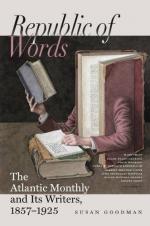Touching Runick inscriptions, I find that they may be classed under three general heads: 1 deg.. Those which are understood by the Danish Royal Society of Northern Antiquaries, and Professor Rafn, their Secretary; 2 deg.. Those which are comprehensible only by Mr Rafn; and 3º. Those which neither the Society, Mr Rafn, nor anybody else can be said in any definite sense to understand, and which accordingly offer peculiar temptations to enucleating sagacity. These last are naturally deemed the most valuable by intelligent antiquaries, and to this class the stone now in my possession fortunately belongs. Such give a picturesque variety to ancient events, because susceptible oftentimes of as many interpretations as there are individual archaeologists; and since facts are only the pulp in which the Idea or event-seed is softly imbedded till it ripen, it is of little consequence what colour or flavour we attribute to them, provided it be agreeable. Availing myself of the obliging assistance of Mr. Arphaxad Bowers, an ingenious photographick artist, whose house-on-wheels has now stood for three years on our Meeting-House Green, with the somewhat contradictory inscription,—“Our motto is onward,”—I have sent accurate copies of my treasure to many learned men and societies, both native and European. I may hereafter communicate their different and (me judice) equally erroneous solutions. I solicit also, Messrs. Editors, your own acceptance of the copy herewith inclosed. I need only premise further, that the stone itself is a goodly block of metamorphick sandstone, and that the Runes resemble very nearly the ornithichnites




